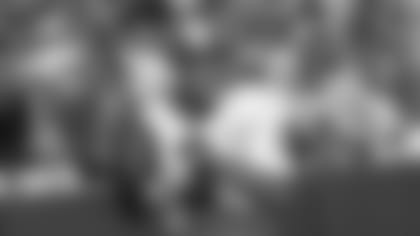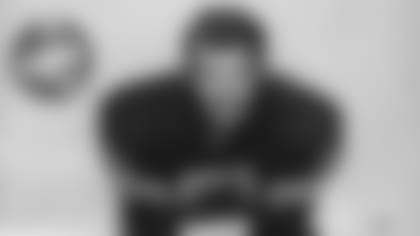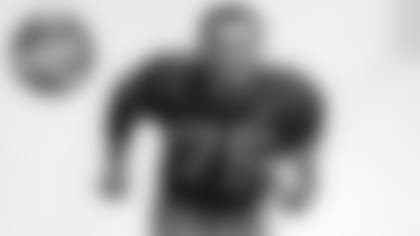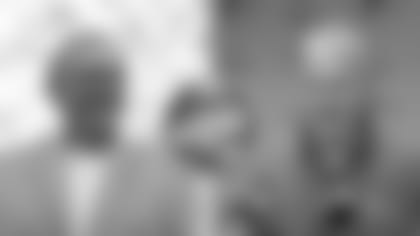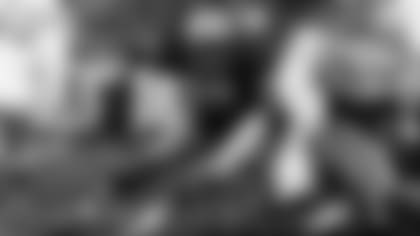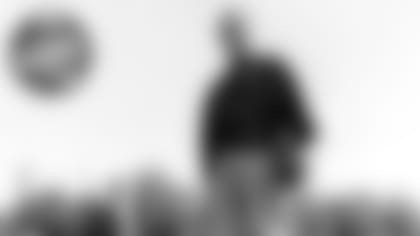There aren't many things in pro football more dispiriting than seeing a player lying on the field motionless or writhing in pain from what has all the appearances of a season-ending or, worse yet, career-ending injury.
Those moments can be deflating for a team and fans alike as the Packers of the 1970s and '80s were reminded all too often.
One of the problems they encountered was an inordinate number of serious injuries to some of their best young players. They were injuries that literally sucked the life out of the franchise when they occurred.
Here were the most devastating.
1. Eddie Lee Ivery (Sept. 2, 1979) –Ivery was in the open field, 11 yards into a second-quarter draw play when he cut and collapsed to the Soldier Field turf on the third carry of his NFL debut. The 15th pick of that year's draft, Ivery led the Packers in rushing and receiving in the preseason and showed flashes of greatness, particularly on a short screen pass he turned into a 42-yard TD in the final exhibition game. Zeke Bratkowski, his backfield coach, had played with Willie Galimore in Chicago and against the Bears' Gale Sayers and compared Ivery's cutback ability to both. But the Packers suffered a 6-3 loss to the Bears that day and Ivery's rookie season ended with a torn ACL and cartilage damage to his left knee. Two years later, Ivery injured the same knee, but a different ligament, in another season-opener at Soldier Field. Ivery felt the second knee injury more than the first cost him some quickness, but the first seemed more emotionally devastating. That was a time when franchise running backs could turn around a team quicker than a franchise quarterback. The season before, Earl Campbell joined a mediocre Houston Oilers team and carried them into the playoffs. In 1980, the year after Ivery's first injury, Billy Sims joined a 2-14 Detroit team and led it to a 9-7 finish.
2. Willie Buchanon (Oct. 21, 1973) – Buchanon's left leg snapped when he got tangled up with Los Angeles Rams receiver Jack Snow in the end zone in the second quarter of the Packers' 24-7 loss at LA's Memorial Coliseum. Buchanon broke both the tibia and fibula in his left leg and was carried from the field on a stretcher and taken to a local hospital. Although doctors told him at the time he might never play again, Buchanon enjoyed nine more productive seasons. He even survived another break to his left fibula in 1975. But there were scouts who thought he was the best cornerback prospect ever when he was taken with the seventh pick in the 1972 draft, and he was as valuable as any player on the Packers' NFL Central Division champs that year. While Buchanon insisted all he did was develop "a little hitch in my gitty-up" from the injury, he had future Pro Football Hall of Famer stamped all over him until that day.
3. Lynn Dickey (Nov. 13, 1977) –Bart Starr couldn't have been more optimistic the morning of April 2, 1976, when he announced the Packers had traded for Dickey and were banking on him to be their savior at quarterback. Less than two years later, on the final play of a game that had been long lost, Dickey was going for a consolation touchdown, behind 24-6, when he was hit low by defensive tackle Larry Brooks. Under heavy pressure all game from the Rams' vaunted defensive line, which also included ends Jack Youngblood and Fred Dryer, and booed lustily throughout it as a result, Dickey crumbled to the County Stadium turf and clutched at his left leg in obvious pain. Minutes later in the locker room, Starr was red-eyed and shaken over the injury, and also upset with the fans' treatment of Dickey. Even more furious over the booing were some of Dickey's teammates, who implored others not to talk to the media. Meanwhile, Dickey was in a Milwaukee hospital with two broken bones in his left leg, or at least he was there until team doctor Eugene Brusky got his first look at the X-rays. Determined the staff on duty that Sunday wasn't equipped to deal with such a severe injury, Brusky ordered an ambulance to transport Dickey back to Green Bay. The next morning, Dr. James Nellen, the Packers' orthopedic surgeon, inserted a plate and six screws in Dickey's leg, but it was almost two years later before he returned to action. By then, the Packers' quarterback of the future, with the gifted arm, was 30 years old.
4. Tim Lewis (Sept. 22, 1986) –Injured while tackling Chicago Bears wide receiver Willie Gault on a short pass during a Monday night game at Lambeau Field, Lewis was carried out on a stretcher as the third quarter ended. At first, the Packers were hopeful Lewis had suffered nothing more than a "jammed neck." But less than 48 hours later, he announced his retirement on the advice of doctors. Entering the 1983 draft, the Packers liked both Lewis and Darrell Green, two of the top three or four cornerback prospects. They took Lewis with the 11th pick because he was bigger than the 5-foot-8, 176-pound Green, and they had no regrets until the injury. Lewis was 24 when he retired with 16 interceptions in 42 starts. Green played 20 seasons and was inducted into the Pro Football Hall of Fame in 2008.
5. John Anderson (Nov. 2, 1980) –When Anderson broke his left arm in the 14th game of his rookie season, it was disappointing. A first-round draft pick, he had graded out as the Packers' best athlete in their speed, strength and agility testing; had intercepted five passes and clinched a spot on the NFL's all-rookie team by then; and might have had a shot at NFL defensive rookie of the year. When Anderson suffered a second break in a July scrimmage in 1979, despite a plate being inserted in his arm, it cast a darker pall over both training camp and his future. When it happened a third time in his third season, it all but derailed the possibility of him becoming a perennial all-pro outside linebacker on a defense badly in need of stars. By then Anderson had missed 18 games in three years, needed a bone graft to continue playing and was destined to have to wear a protective device over his left forearm for the remainder of his career. The fact he played 12 years speaks volumes about his athletic ability and reliability, but if not for the broken arms, there's reason to wonder if he wouldn't have been the second coming of Pittsburgh Hall of Famer Jack Ham.









